Study on Propulsion Performance by Varying Rake Distribution at the Propeller Tip
Abstract
:1. Introduction
2. Study Methods of Tip Rake Propellers
2.1. Design Based on Potential Analysis
2.2. Tip Rake Propeller Model Test
2.3. Numerical Analysis of Propeller Open Water Performance by Computational Fluid Dynamics (CFD)
3. Conclusions and Discussion
Author Contributions
Funding
Conflicts of Interest
References
- Kappel, J.; Andersen, P. KAPPEL propeller development of a marine propeller with non-planar lifting surfaces. In Proceedings of the 24th Motor Ship Marine Propulsion Conference, Copenhagen, Denmark, 10–11 April 2002. [Google Scholar]
- Lee, J.H.; Kim, M.C.; Shin, Y.J.; Kang, J.G.; Jang, H.G. A study on performance of tip rake propeller in propeller open water condition. J. Soc. Nav. Archit. Korea 2017, 54, 10–17. [Google Scholar] [CrossRef]
- Ha, D.S.; Jeon, E.C.; Ahn, K.W.; Yeom, G.W. Aerodynamic analysis of various winglet shapes. In Proceedings of the Journal of the Korean Society of Mechanical Engineers 2014 Spring Conference, Busan, Korea, 15–16 May 2014; pp. 216–217. [Google Scholar]
- Gennaro, G.; Adalid, J.G. Improving the Propulsion Efficiency by Means of Contracted and Loaded Tip (CLT) Propellers; The Society of Naval Architects & Marine Engineers: Athens, Greece, 13 September 2012. [Google Scholar]
- Yamasaki, S.; Okazaki, A.; Mishima, T.; Kawanami, Y.; Yoshitaka, U. The effect of tip rakes on propeller induced pressure fluctuations first report: A practical formula to estimate the reduction rate of pressure fluctuations the application of backward tip rake. J. Jpn. Soc. Nav. Archit. Ocean Eng. 2013, 17, 9–17. [Google Scholar]
- Kim, M.G.; Lee, J.T.; Lee, C.S.; Seo, J.C. Prediction of steady performance of a propeller by using a potential-based panel method. J. Soc. Nav. Archit. Korea 1993, 30, 73–86. [Google Scholar]
- Kim, G.D.; Lee, C.S. Application of high order panel method for improvement of prediction of marine propeller performance. J. Soc. Nav. Archit. Korea 2005, 42, 113–123. [Google Scholar]
- Kim, K.S.; Lee, C.S. Influence of Reynolds Number on Propeller Open-Water Characteristics, Korea Inst. Mach. Mater. Rep. 1985.
- Kwon, J.I. A Study on Biased Asymmetric Pre-Swirl Stator for Container Ship. Master’s Thesis, Pusan National University, Busan, Korea, 2013. [Google Scholar]
- Park, S.H.; Seo, J.H.; Kim, D.H.; Rhee, S.H.; Kim, K.S. Numerical analysis of a tip vortex flow for propeller tip shapes. J. Soc. Nav. Archit. Korea 2011, 48, 501–508. [Google Scholar] [CrossRef]
- Baek, D.G.; Yoon, H.S.; Jung, J.H.; Kim, K.S.; Park, B.G. Effect of advance ration on the evolution of propeller wake. J. Soc. Nav. Archit. Korea 2014, 51, 1–7. [Google Scholar] [CrossRef]
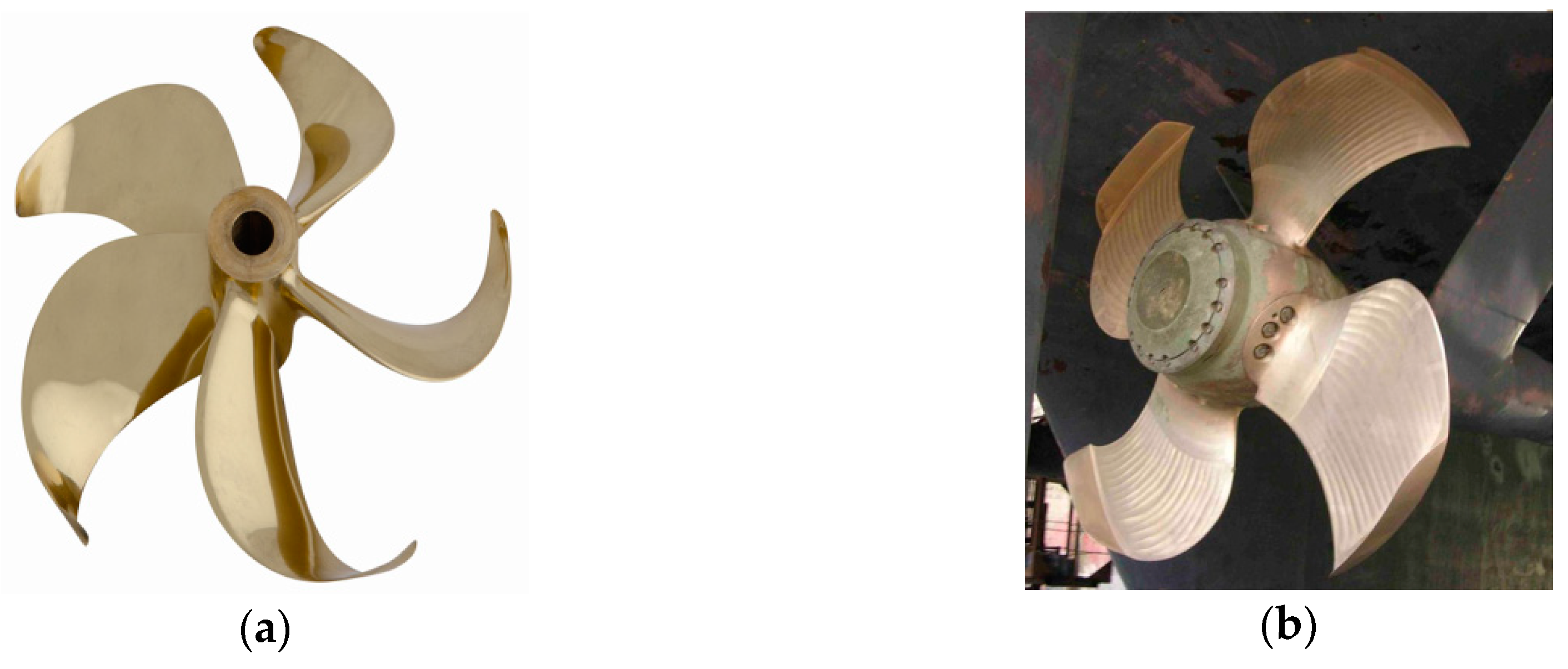
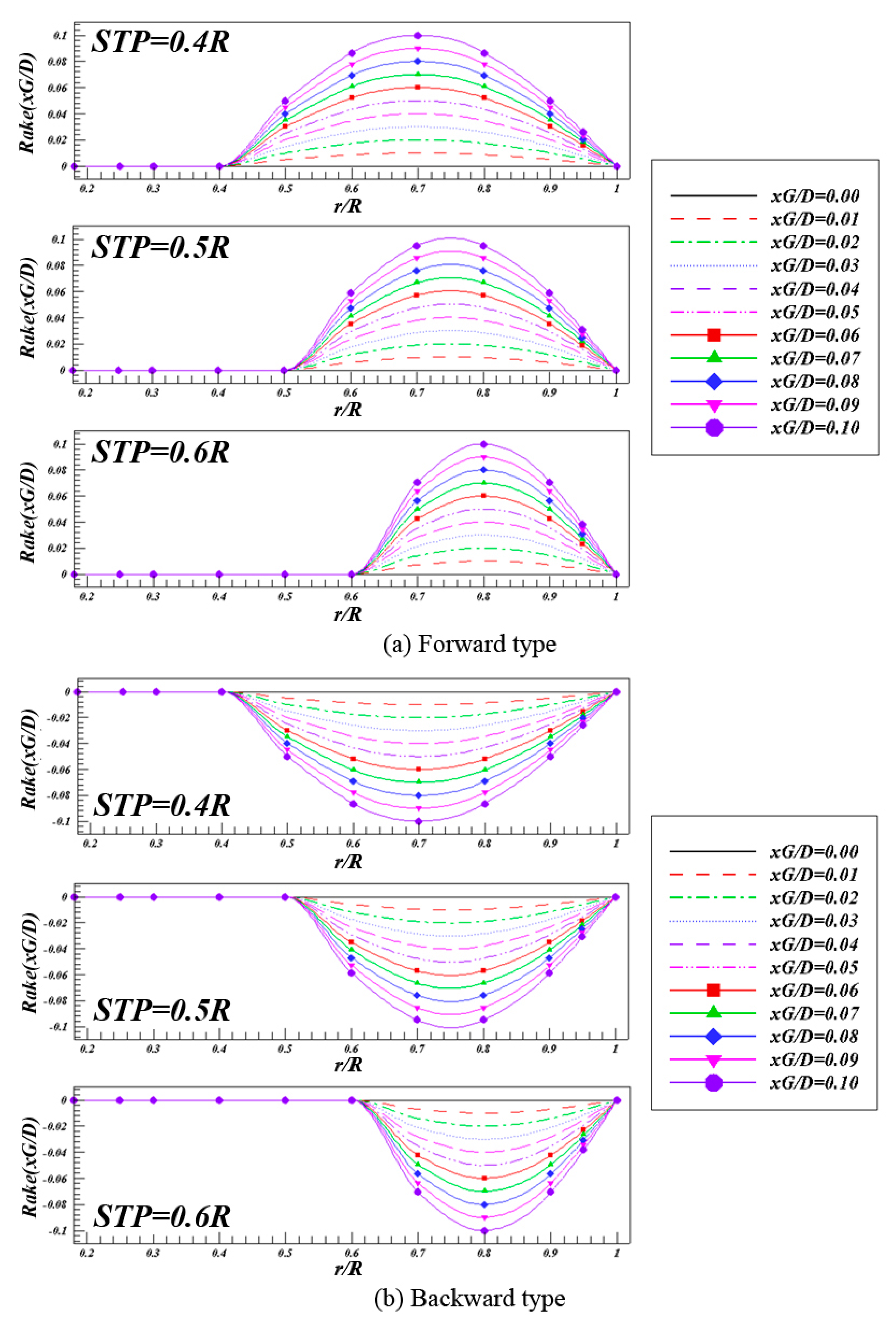

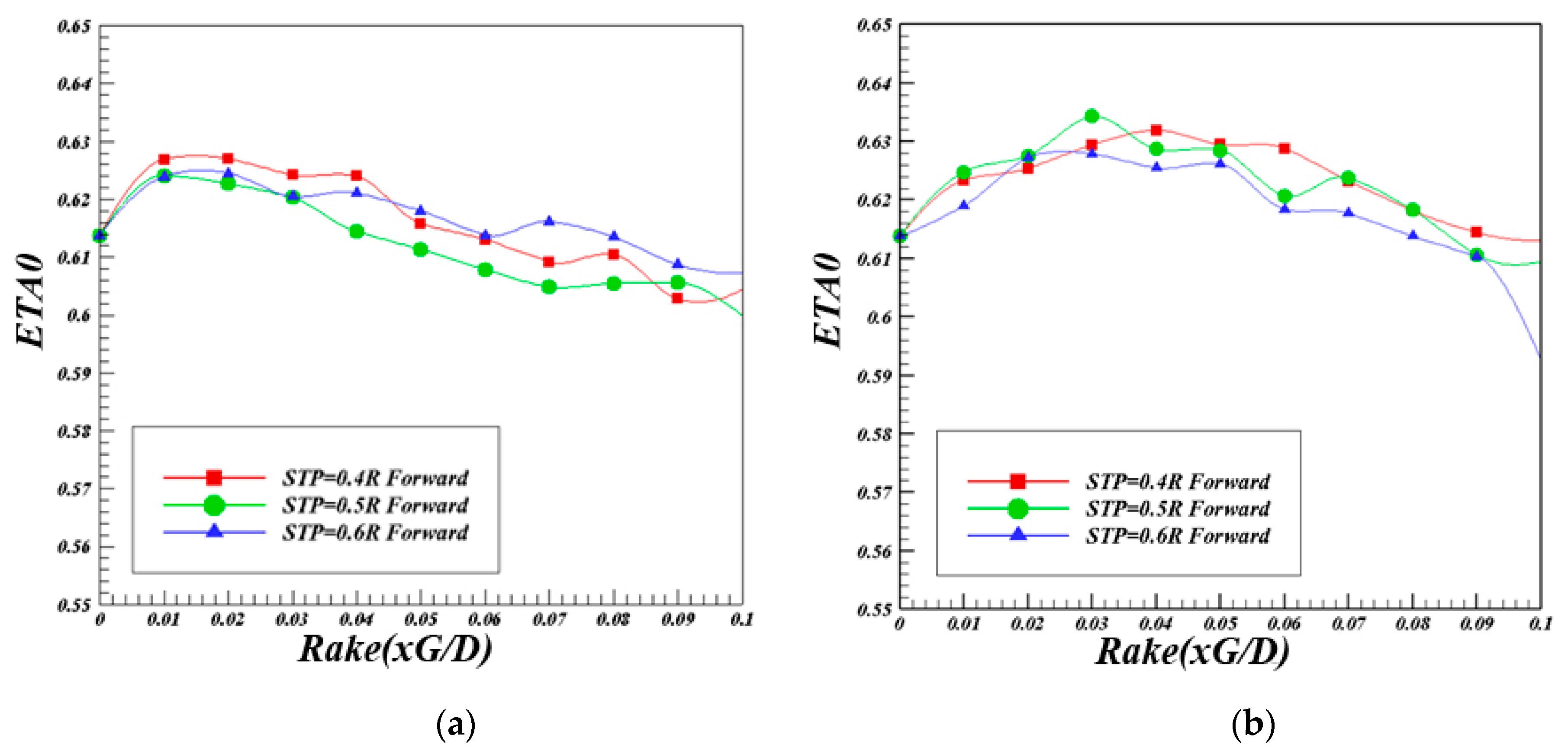
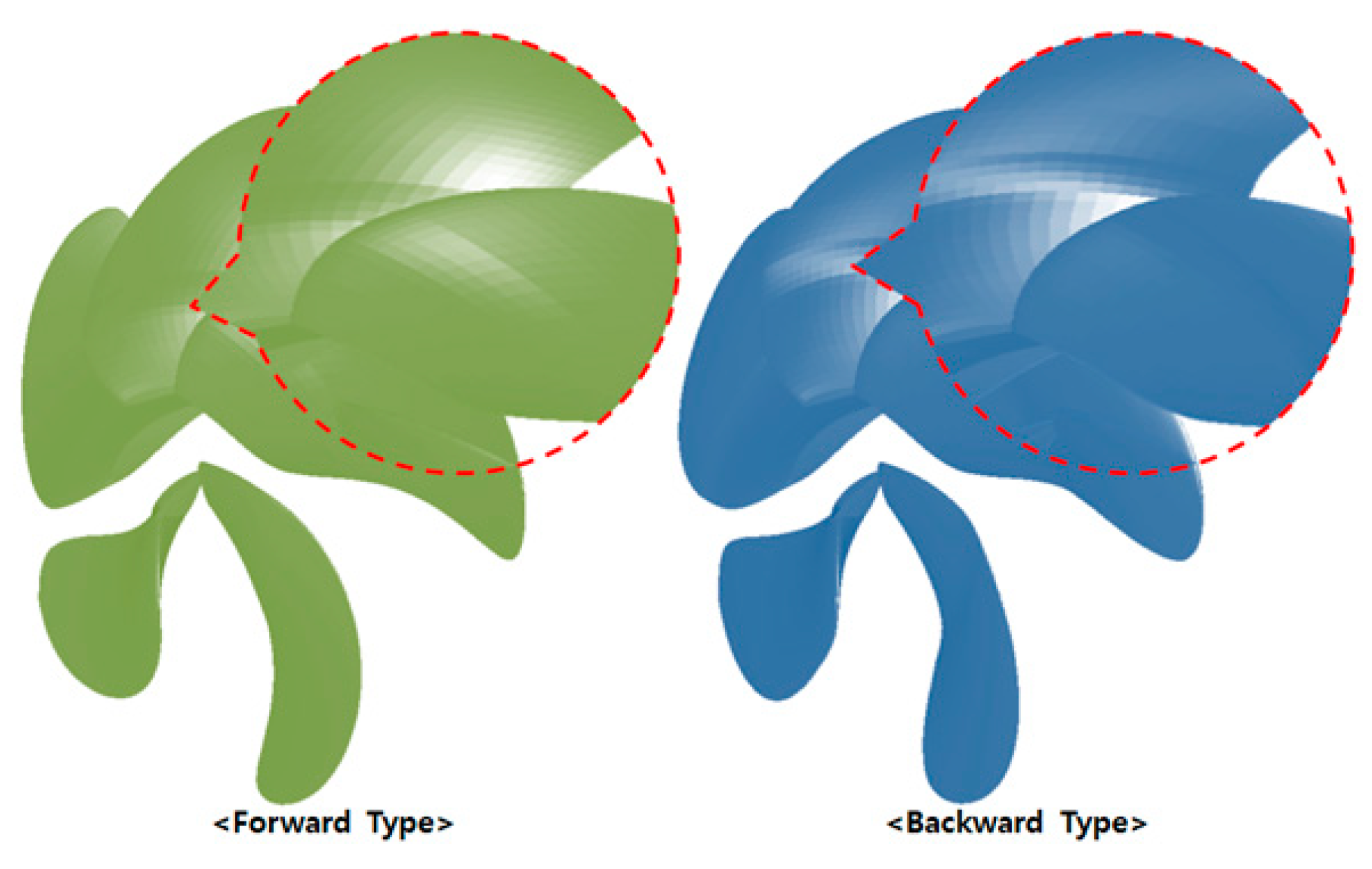
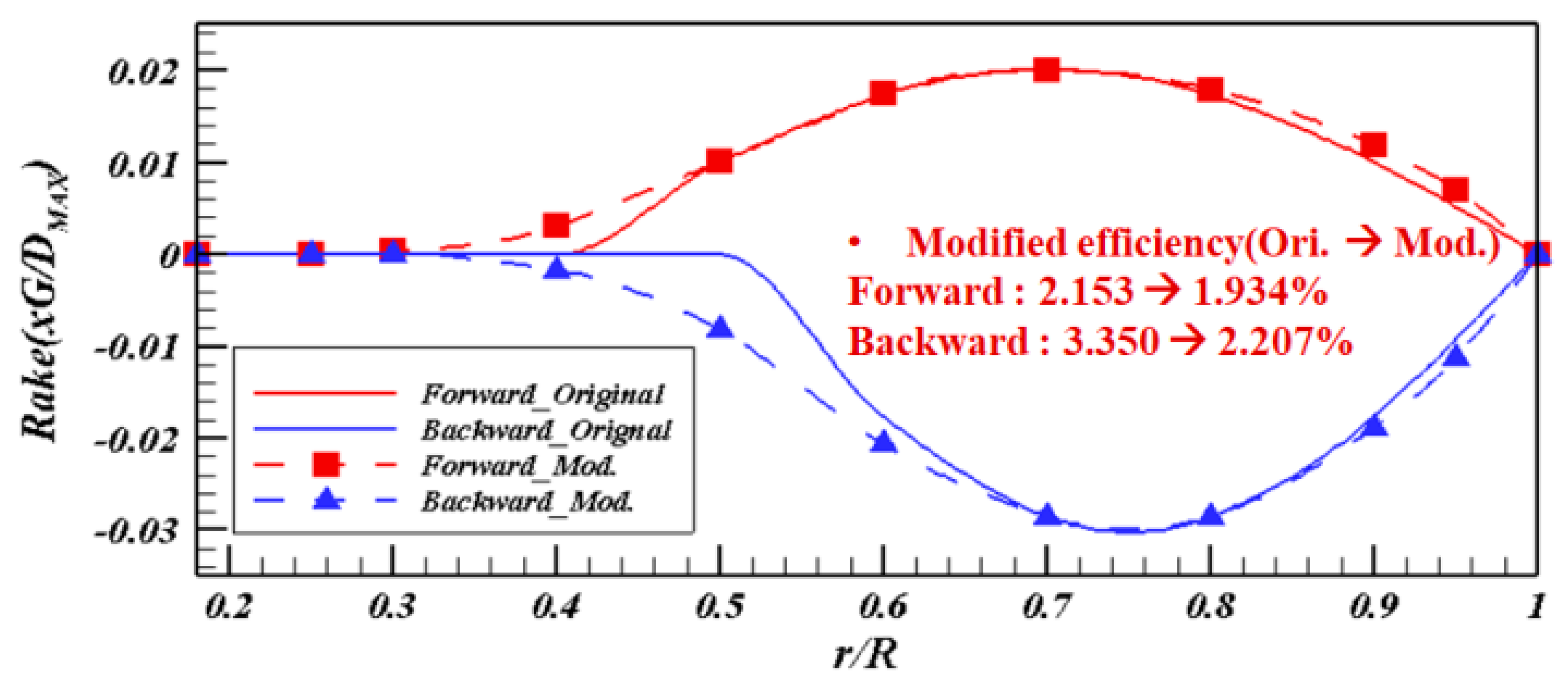
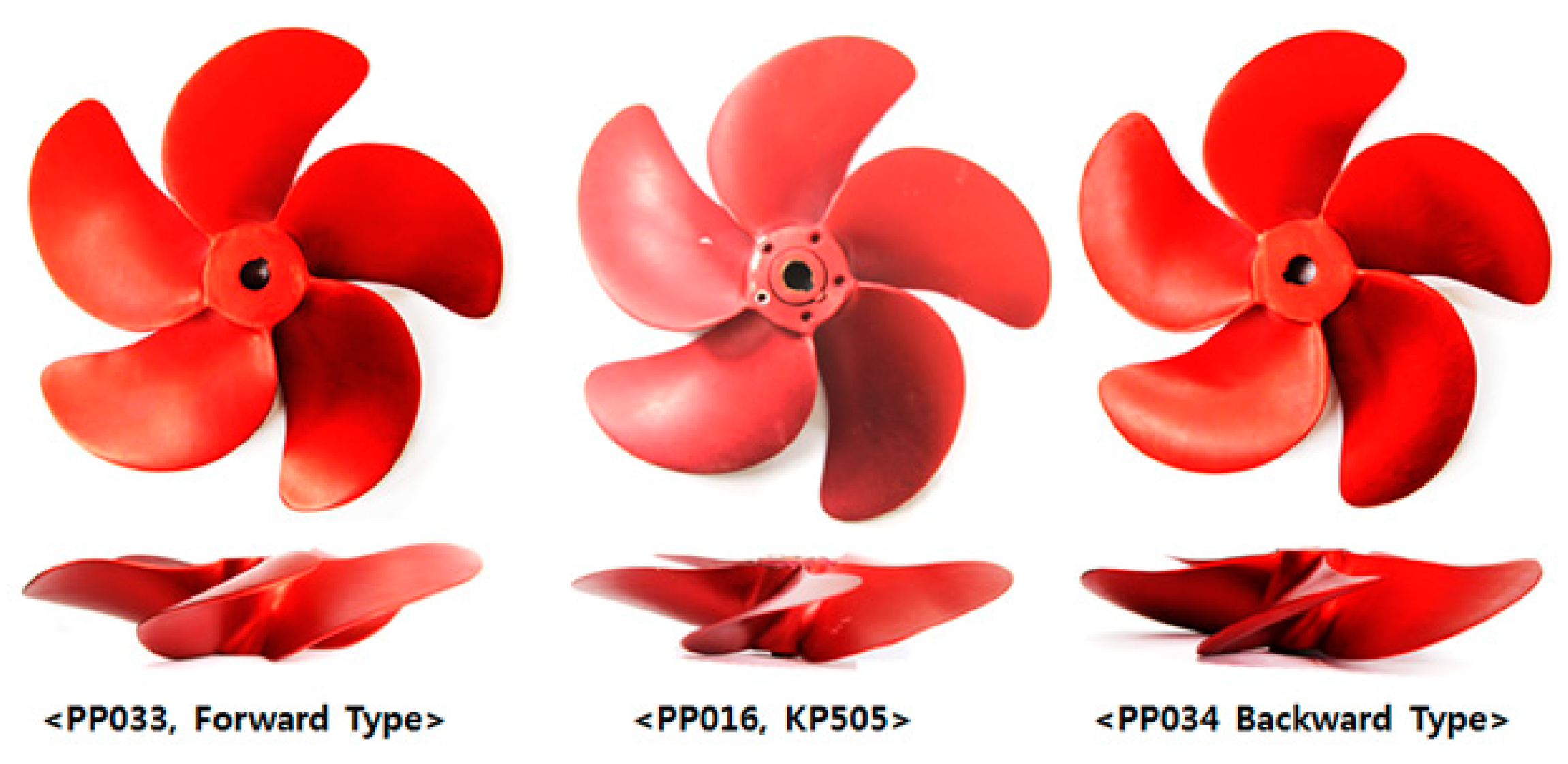
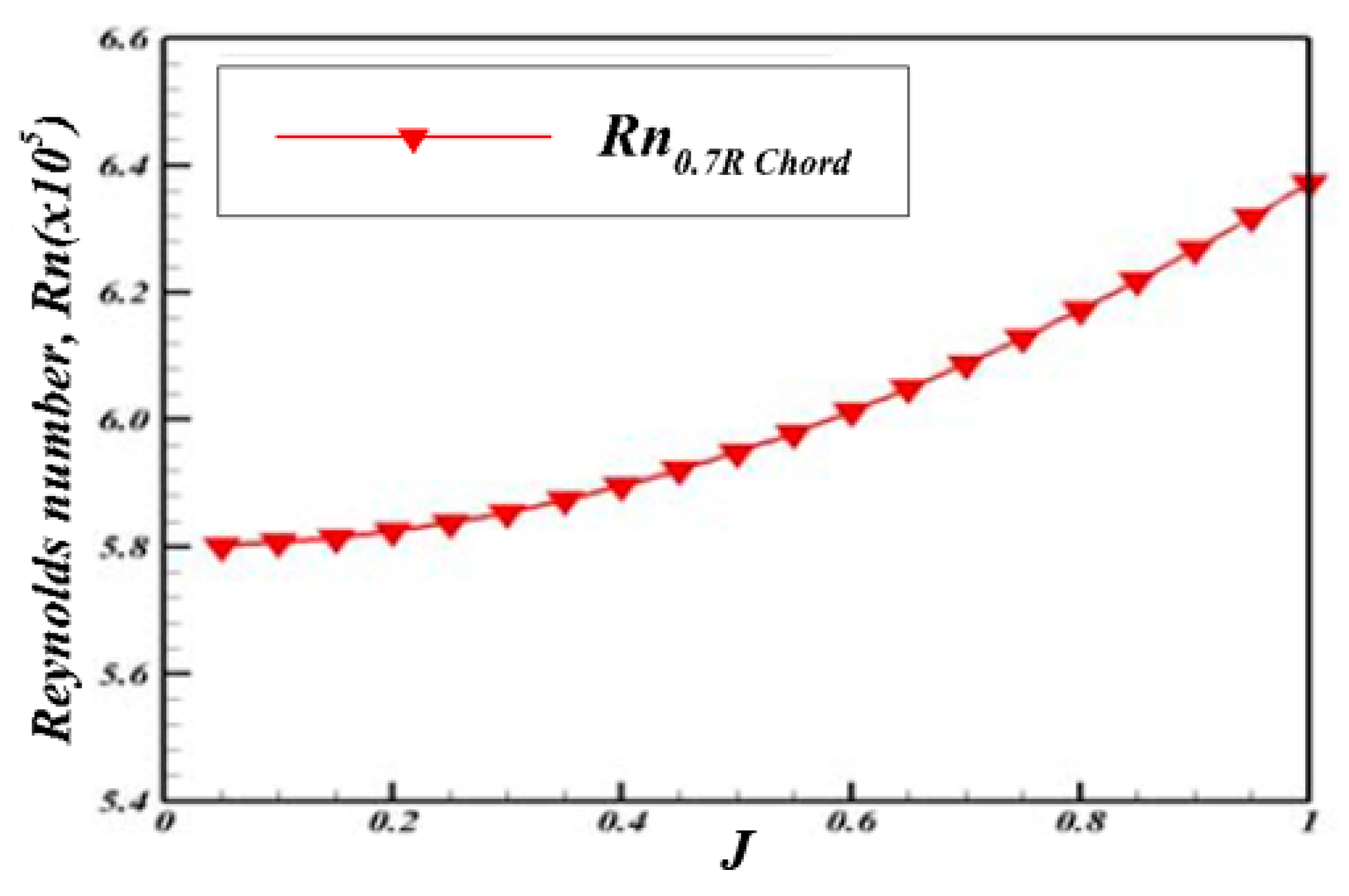
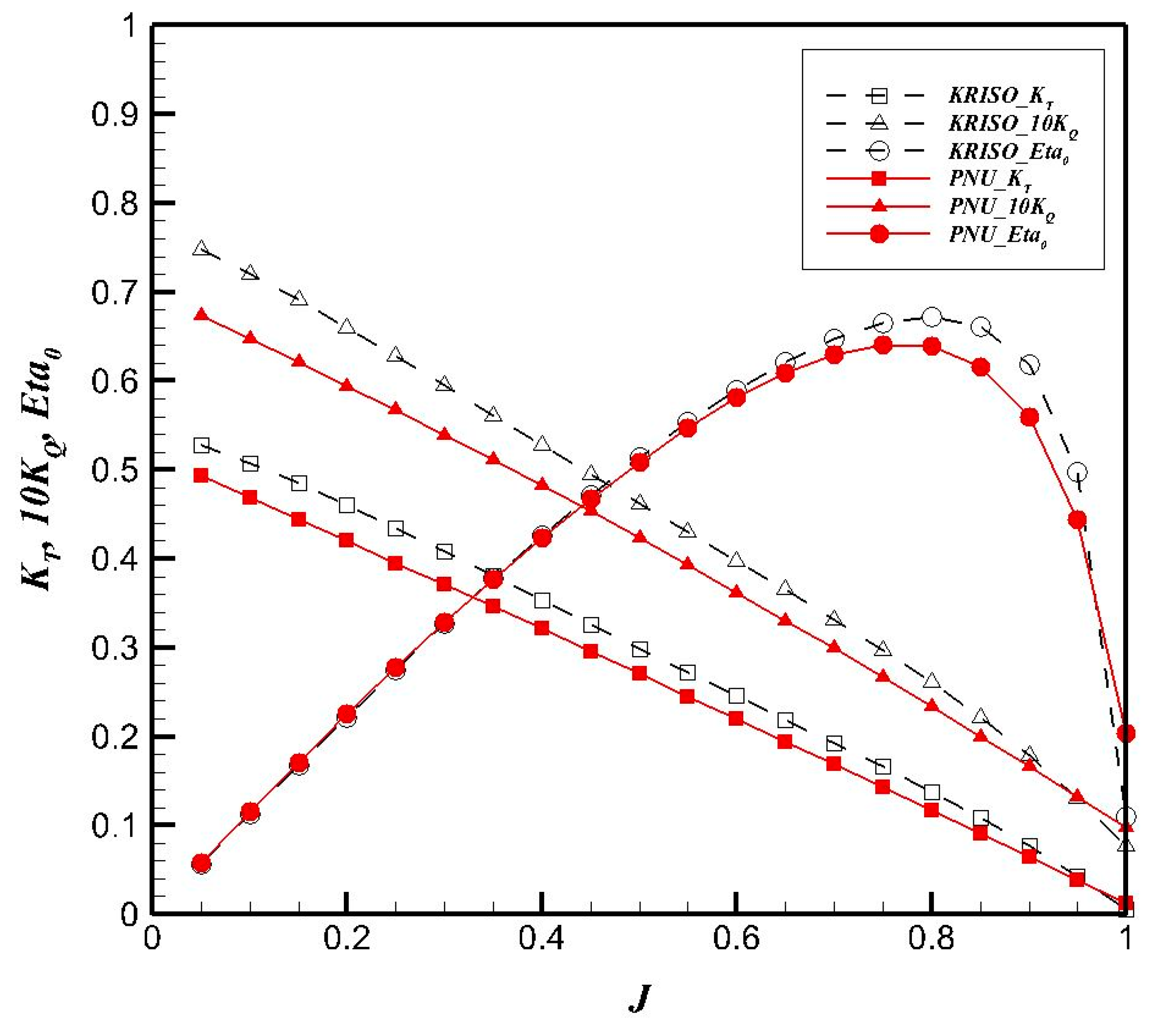
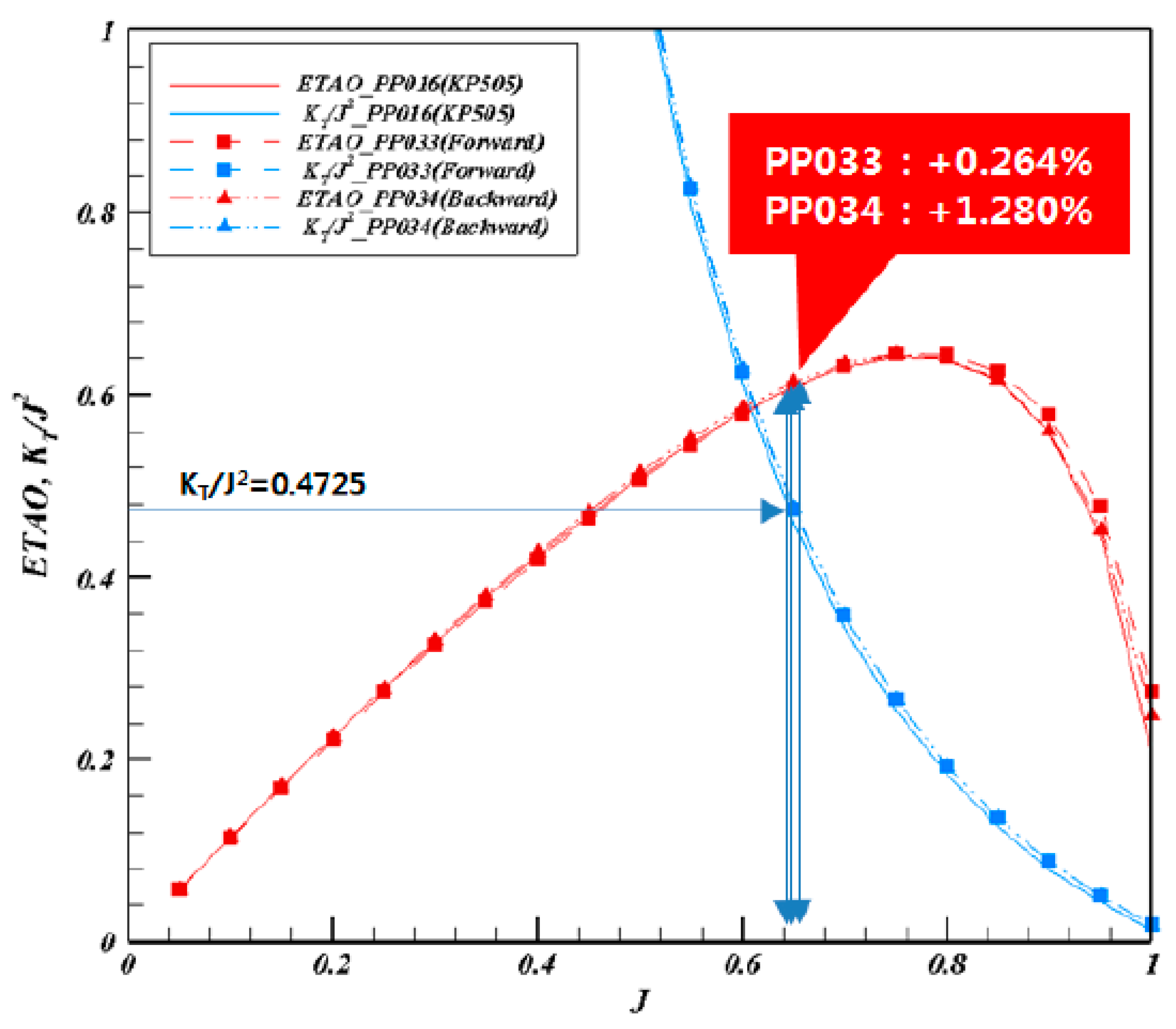
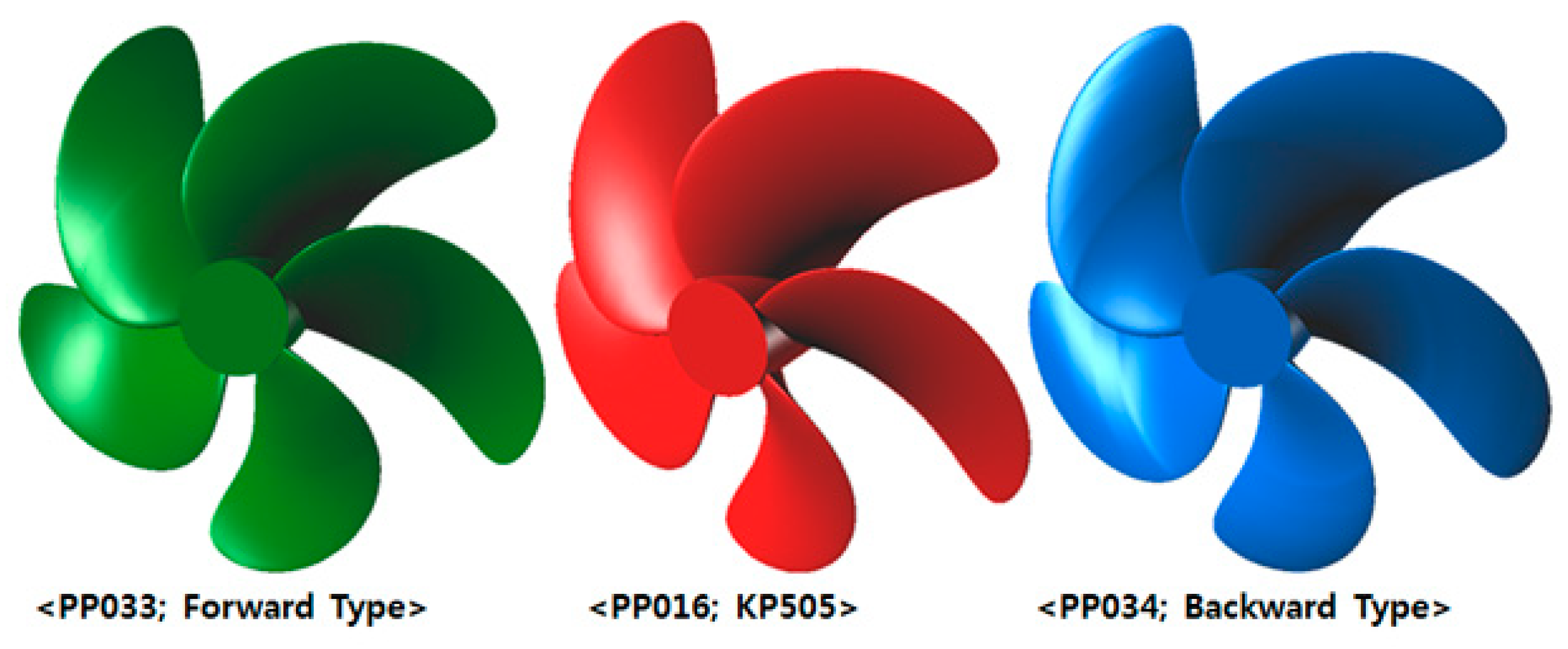

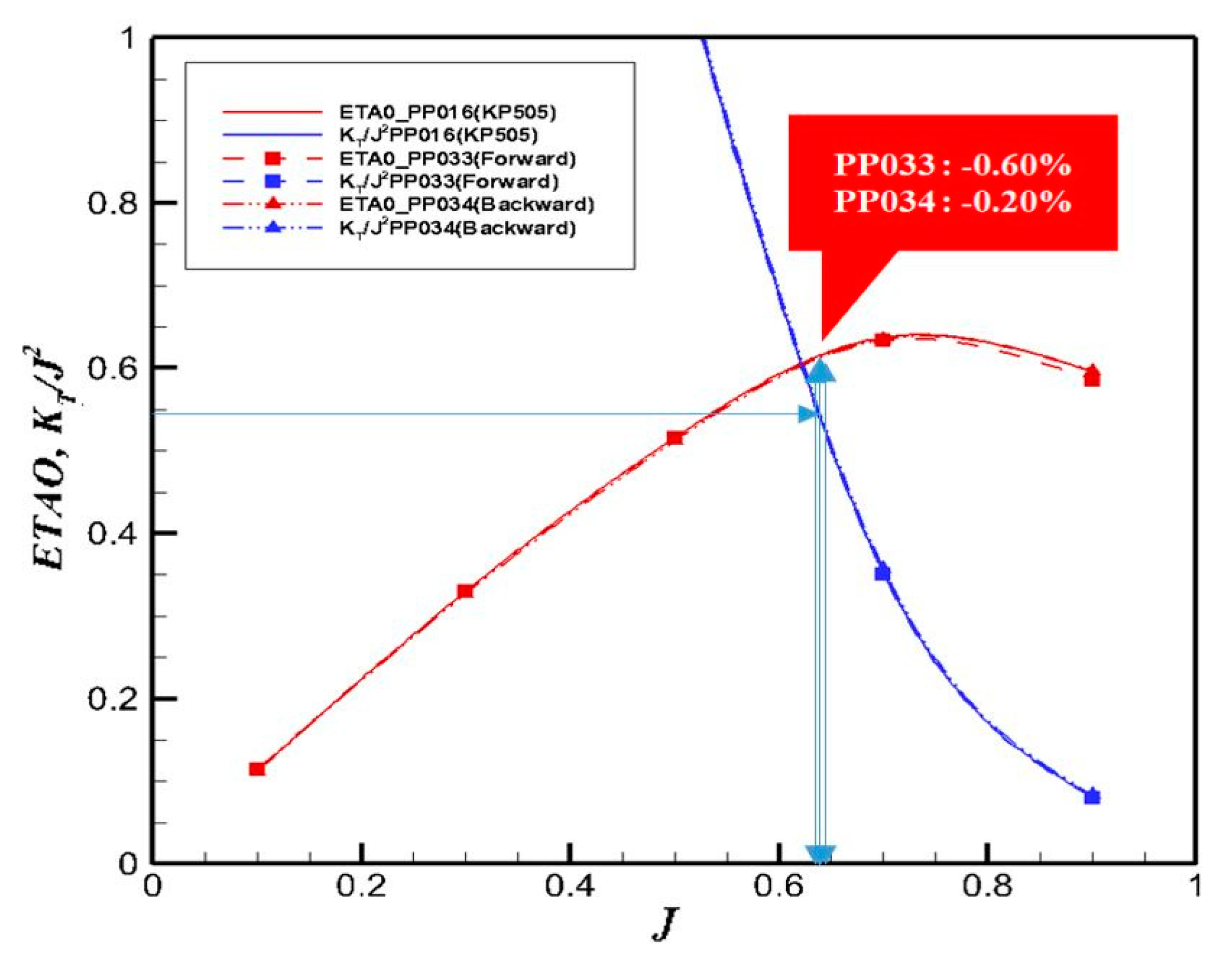
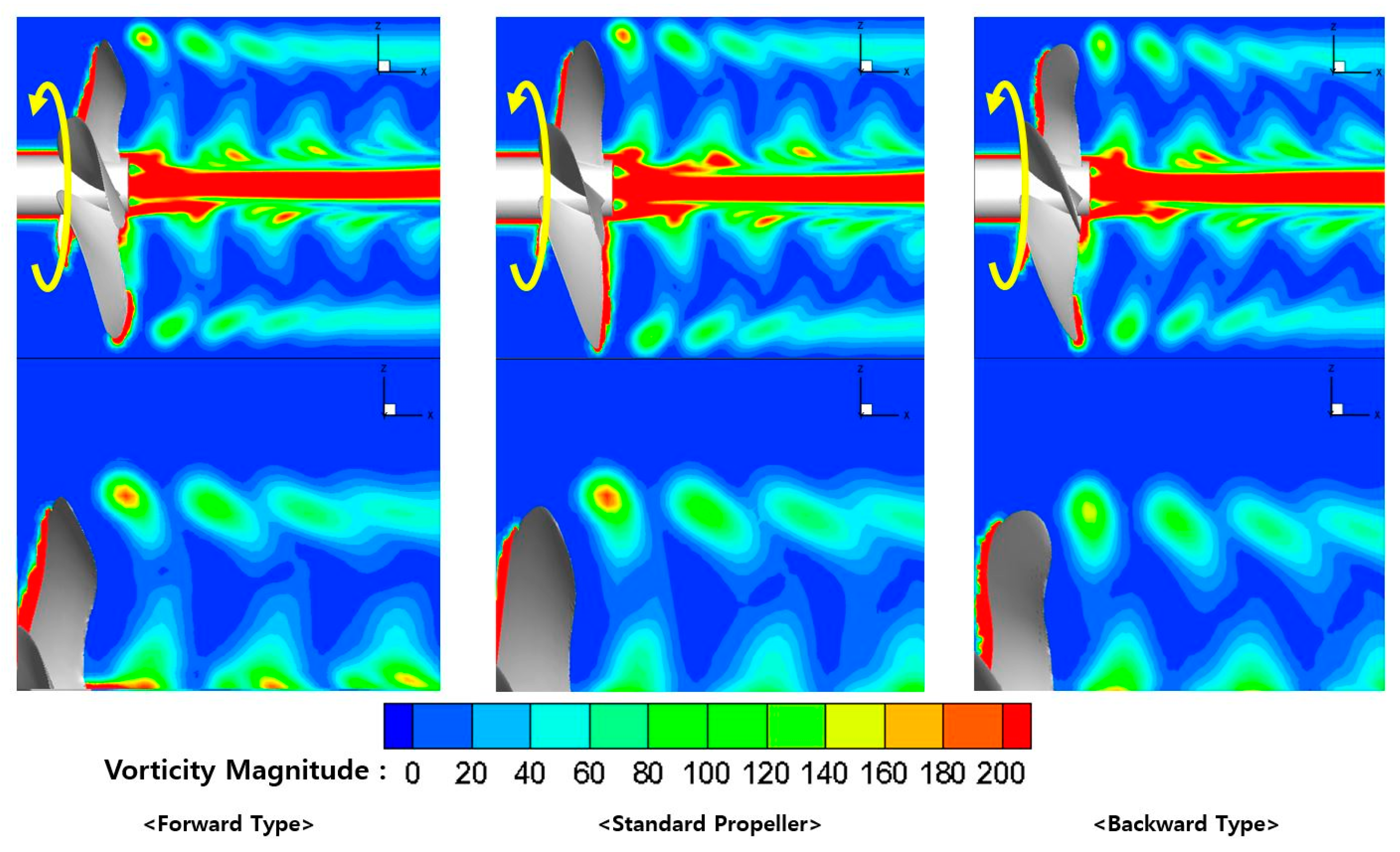
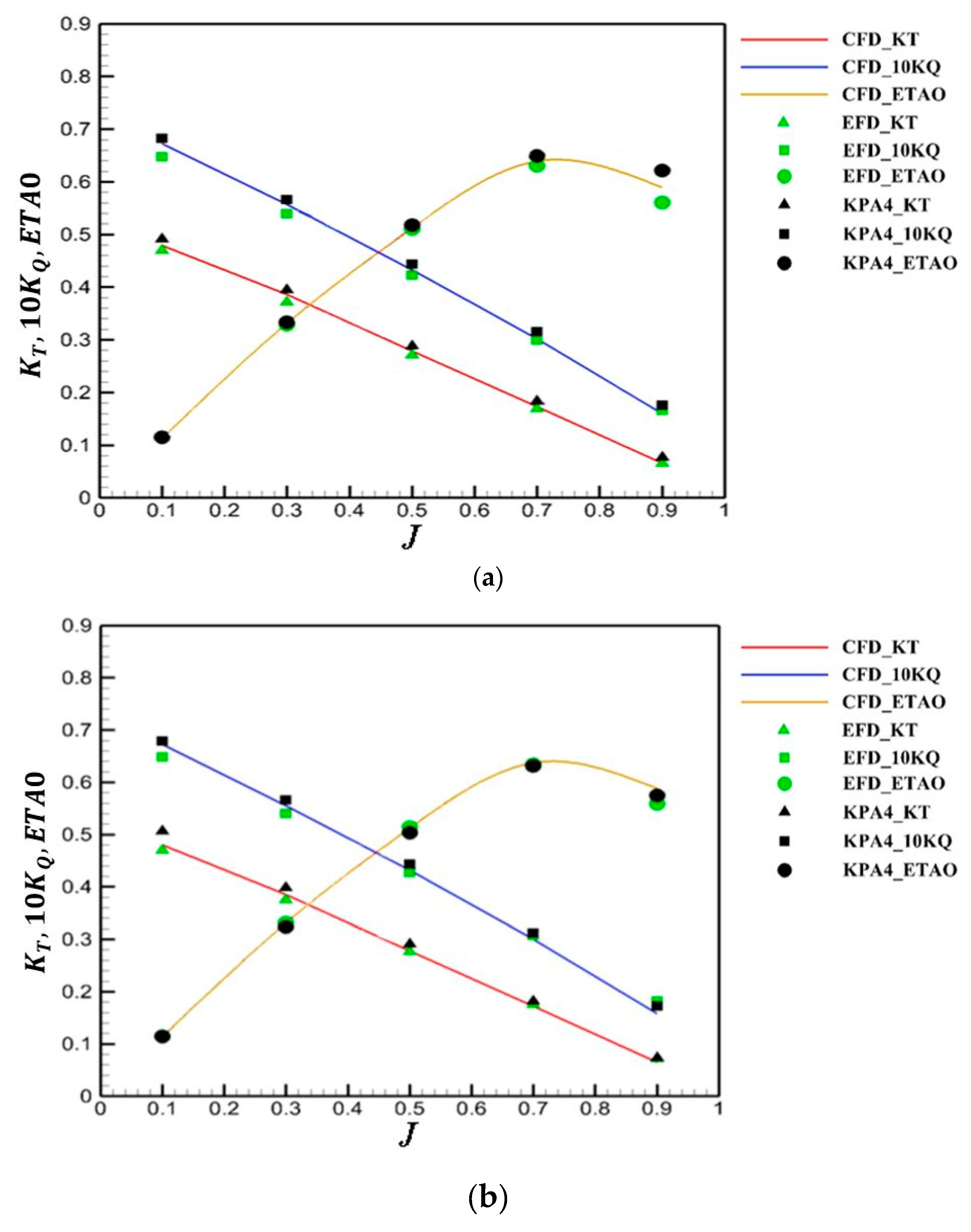
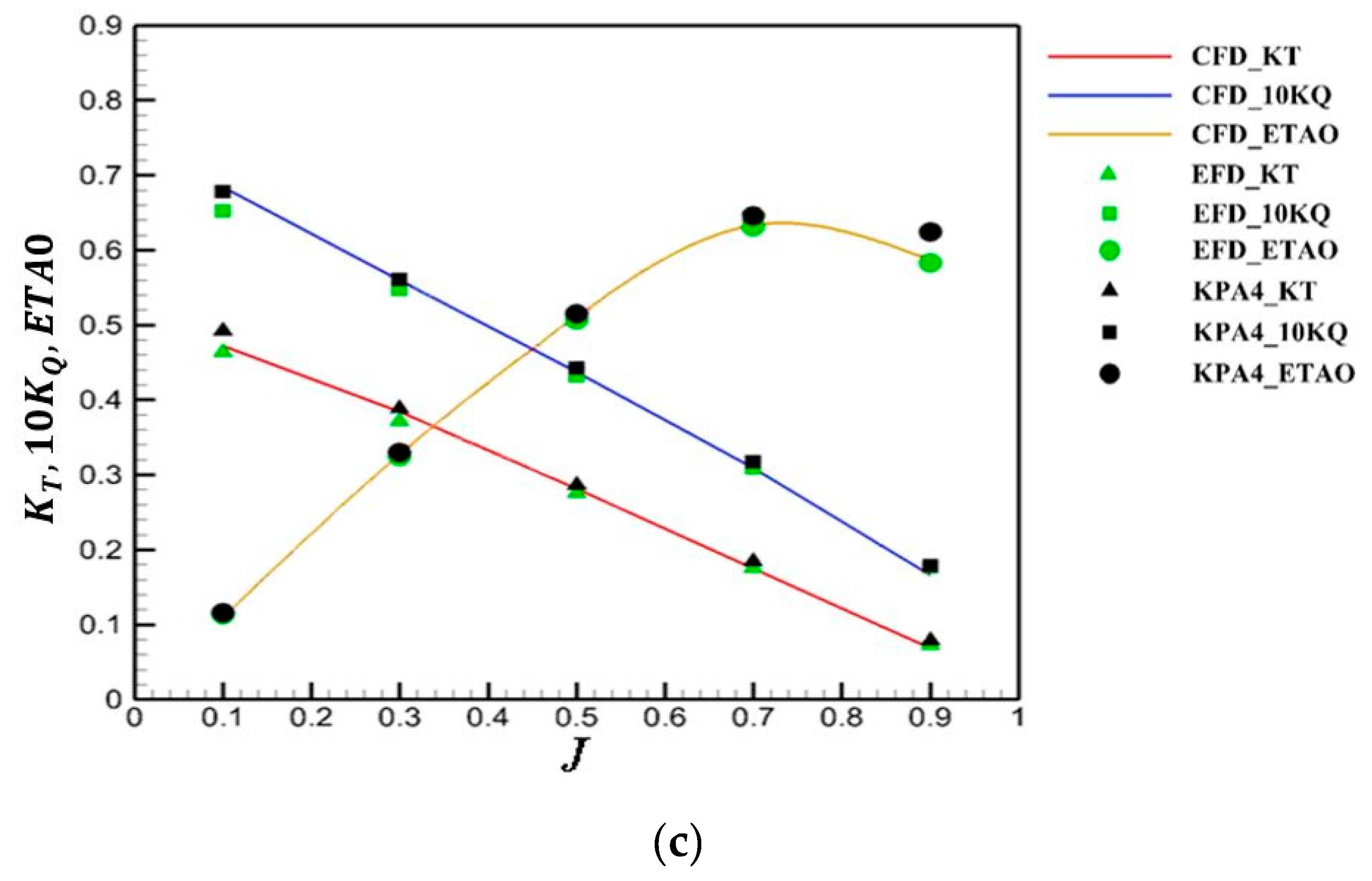
| r/R | P/D | Rake (xG/D) | Skew(°) | C/D | f0/C | T0/D | |
|---|---|---|---|---|---|---|---|
| Forward | Backward | ||||||
| 0.18 | 0.8347 | 0.0000 | 0.0000 | −4.72 | 0.2313 | 0.0284 | 0.0459 |
| 0.25 | 0.8912 | 0.0000 | 0.0000 | −6.98 | 0.2618 | 0.0296 | 0.0407 |
| 0.30 | 0.9269 | 0.0004 | 0.0000 | −7.82 | 0.2809 | 0.0295 | 0.0371 |
| 0.40 | 0.9783 | 0.0031 | −0.0017 | −7.74 | 0.3138 | 0.0268 | 0.0305 |
| 0.50 | 1.0079 | 0.0101 | −0.0082 | −5.56 | 0.3403 | 0.0220 | 0.0246 |
| 0.60 | 1.0130 | 0.0174 | −0.0206 | −1.50 | 0.3573 | 0.0173 | 0.0195 |
| 0.70 | 0.9967 | 0.0200 | −0.0285 | 4.11 | 0.3590 | 0.0140 | 0.0149 |
| 0.80 | 0.9566 | 0.0180 | −0.0285 | 10.48 | 0.3376 | 0.0120 | 0.0107 |
| 0.90 | 0.9006 | 0.0119 | −0.0189 | 17.17 | 0.2797 | 0.0104 | 0.0069 |
| 0.95 | 0.8683 | 0.0070 | −0.0113 | 20.63 | 0.2225 | 0.0101 | 0.0053 |
| 1.00 | 0.8331 | 0.0000 | 0.0000 | 24.18 | 0.0001 | 8.7000 | 0.0037 |
| the Type of Propellers | PP016 (KP505) | PP033 (Forward) | PP034 (Backward) |
|---|---|---|---|
| J | 0.659 | 0.662 | 0.661 |
| η0 | 0.614 | 0.626 | 0.627 |
| Diff.(%) | - | 1.934 | 2.207 |
| the Type of Propellers | PP016 (KP505) | PP033 (Forward) | PP034 (Backward) |
|---|---|---|---|
| J | 0.646 | 0.651 | 0.651 |
| η0 | 0.607 | 0.608 | 0.614 |
| Diff.(%) | - | 0.264 | 1.280 |
| J | KT | 10KQ | ETAO |
| 0.1 | 0.479 | 0.672 | 0.113 |
| 0.3 | 0.386 | 0.558 | 0.330 |
| 0.5 | 0.279 | 0.431 | 0.516 |
| 0.7 | 0.173 | 0.303 | 0.637 |
| 0.9 | 0.066 | 0.160 | 0.596 |
| (a) Reference propeller (KP505) | |||
| J | KT | 10KQ | ETAO |
| 0.1 | 0.472 | 0.668 | 0.112 |
| 0.3 | 0.384 | 0.561 | 0.327 |
| 0.5 | 0.281 | 0.436 | 0.512 |
| 0.7 | 0.175 | 0.308 | 0.635 |
| 0.9 | 0.068 | 0.164 | 0.597 |
| (b) Forward propeller | |||
| J | KT | 10KQ | ETAO |
| 0.1 | 0.480 | 0.672 | 0.114 |
| 0.3 | 0.385 | 0.557 | 0.330 |
| 0.5 | 0.278 | 0.429 | 0.515 |
| 0.7 | 0.172 | 0.302 | 0.633 |
| 0.9 | 0.065 | 0.158 | 0.586 |
| (c) Backward propeller | |||
| Program | Star CCM+ (Ver. 9.04) |
|---|---|
| Governing equation | Reynolds Averaged Navier Stokes (RANS) equation |
| Discretization | Cell centered FVM |
| Turbulence model | Realizable κ-ε model |
| Velocity-pressure coupling | SIMPLE algorithm |
| Rotation method | Sliding interface moving mesh |
| Cell number | 1,600,000 |
| The Type of Propellers | PP016 (KP505) | PP033 (Forward) | PP034 (Backward) |
|---|---|---|---|
| J | 0.669 | 0.670 | 0.668 |
| η0 | 0.618 | 0.617 | 0.614 |
| Diff.(%) | - | −0.2 | −0.6 |
| Potential Analysis | Model Test | CFD Analysis | |
|---|---|---|---|
| Forward | +1.9% | +0.3% | −0.2% |
| Backward | +2.2% | +1.3% | −0.6% |
© 2019 by the authors. Licensee MDPI, Basel, Switzerland. This article is an open access article distributed under the terms and conditions of the Creative Commons Attribution (CC BY) license (http://creativecommons.org/licenses/by/4.0/).
Share and Cite
Kang, J.G.; Kim, M.C.; Kim, H.U.; Shin, I.R. Study on Propulsion Performance by Varying Rake Distribution at the Propeller Tip. J. Mar. Sci. Eng. 2019, 7, 386. https://doi.org/10.3390/jmse7110386
Kang JG, Kim MC, Kim HU, Shin IR. Study on Propulsion Performance by Varying Rake Distribution at the Propeller Tip. Journal of Marine Science and Engineering. 2019; 7(11):386. https://doi.org/10.3390/jmse7110386
Chicago/Turabian StyleKang, Jin Gu, Moon Chan Kim, Hyeon Ung Kim, and I. Rok Shin. 2019. "Study on Propulsion Performance by Varying Rake Distribution at the Propeller Tip" Journal of Marine Science and Engineering 7, no. 11: 386. https://doi.org/10.3390/jmse7110386
APA StyleKang, J. G., Kim, M. C., Kim, H. U., & Shin, I. R. (2019). Study on Propulsion Performance by Varying Rake Distribution at the Propeller Tip. Journal of Marine Science and Engineering, 7(11), 386. https://doi.org/10.3390/jmse7110386





